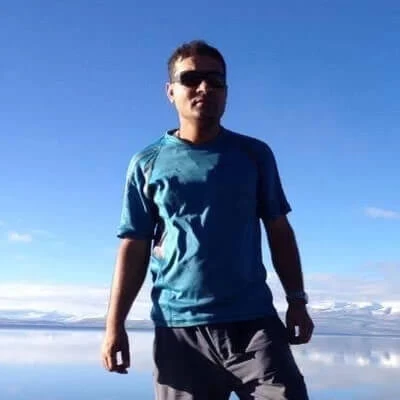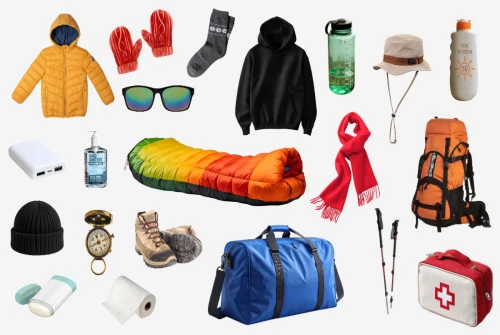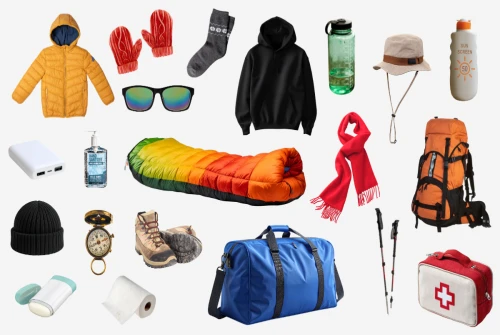As of 2023, Nepal has a broad range of trekking zones that appeal to trekkers' interests, each requiring specific trekking permits to encourage exploration. These permits are essential for restricting access to various trekking sites, ensuring both the preservation of natural resources and trekkers' safety.
There are three sorts of trekking regions in Nepal: open trekking regions, controlled trekking regions, and restricted trekking regions. Trekkers can explore independently in open trekking regions such as Annapurna, Everest, and Langtang without the necessity for a government-registered organization or guide. This allows trekkers to immerse themselves in the spectacular scenery and cultural delights that these regions have to offer.
Controlled trekking areas, on the other hand, need the use of government-registered trekking agencies in order to get permits. These regions find a mix between autonomy and regulation, ensuring that trekkers have guidance while remaining flexible in their routes.
Stringent controls apply in limited hiking areas such as Manaslu, Nar Phu, Upper Mustang, Kanchenjunga, Dolpo, Mugu, and Simikot. Trekking in these places necessitates the acquisition of trekking permits as well as the company of government-registered license holders. Due to safety and preservation considerations, independent trekking is normally restricted in these areas
The cost of trekking permits vary based on the region and length of the hike. The permission payments help to preserve the natural environment and assist local communities. These fees also help to maintain the routes and assure trekkers' safety and well-being.
It's important to note that laws and permit prices are subject to change, so trekkers should check with government sources or trustworthy trekking organizations for the most up-to-date information before beginning on their Nepal trekking journey. Staying up to date on the current regulations and fees enables a seamless and enjoyable trekking experience while respecting the region's natural beauty and cultural history.
Trekking Regions
Nepal has a wide variety of trekking regions, each with its unique attraction and challenges. Trekkers must obtain several trekking permits based on the specific regions they wish to explore. These permits are classified according to the kind of trekking region and serve an important role in regulating and managing the flow of trekkers to various parts of Nepal.
The Nepalese government divides trekking territories into three categories: open trekking regions, controlled trekking regions, and restricted trekking regions. The classification affects the level of access, obligations, and limits imposed on trekkers in these locations.
Open Area Trekking Regions
Trekkers in these areas have the freedom to explore without the necessity for a government-registered service or guide. Popular open trekking regions include the Annapurna region, the Everest region, the Langtang region, and others. Trekkers can have some flexibility while traversing these areas, and permission prices are often lower than in restricted areas.
Controlled Trekking Areas
Trekkers in controlled trekking areas must get permits from government-registered trekking agencies. While trekkers are not required to travel with a guide, they must obtain permits from recognized providers. These areas strive for a balance of accessibility and environmental conservation. reserves surrounding national parks and conservation reserves are examples of regulated trekking areas.
Restricted Trekking Areas
Because of their ecological, cultural, or geopolitical sensitivity, restricted hiking areas have more restrictive regulations. To get permits for these areas, trekkers must join government-registered agencies and be accompanied by qualified guides. Manaslu, Nar Phu, Upper Mustang, Kanchenjunga, Dolpo, Mugu, Simikot, and other restricted hiking areas include Manaslu, Nar Phu, and others. Because of the limited number of trekkers allowed and the unique experiences they provide, these regions frequently have higher permission fees.
Permit prices vary depending on the type of trekking region and the length of the journey. The fees help to conserve Nepal's natural and cultural heritage, as well as to maintain trekking paths and facilities. Trekkers must research and plan ahead of time, taking into account both permit prices and laws specific to their selected trekking destination.
Numerous factors contribute to determining the accessibility of specific regions in Nepal for foreign visitors. Recent modifications have led to increased freedom for both trekking and climbing activities, and there is significant urging to expand the availability of areas for hikers. It is advisable to seek guidance from entities such as Nepal Trekking Experts or the central immigration office before embarking on an unconventional trek to ensure accurate information and proper planning.
Trekking Regions and Permit Fee
Everest Region
The Everest-Khumbu region is located in the northeastern part of Nepal and is renowned worldwide as the abode of the planet's loftiest peak, Mount Everest, reaching an awe-inducing elevation of 8848 meters above sea level. This area also boasts other Himalayan behemoths, including towering summits like Lhotse, Makalu, and Cho Oyu, each soaring beyond the 8000-meter mark. Central to this region is the Sagarmatha National Park, encompassing a remarkable expanse of diverse natural beauty and serving as the backdrop for some of Nepal's most exceptional trekking opportunities, albeit some of the most challenging as well.
Embarking on a trek through the Everest-Khumbu region is a profoundly unique experience. The journey takes trekkers through awe-inspiring landscapes, where pristine alpine terrain mingles with towering peaks. The trails wind through lush forests, picturesque valleys, and high-altitude villages, all of which are punctuated by the breathtaking presence of Everest and its neighboring giants. The physical and mental journey to reach the foot of such iconic mountains is both humbling and inspiring, evoking a sense of reverence for the grandeur of nature and the human spirit.
Sagarmatha National Park, encompassing an area of outstanding ecological significance, provides a sanctuary for a diverse range of flora and fauna. The region is a UNESCO World Heritage Site and is renowned for its rich biodiversity, featuring rare species and pristine wilderness that capture the essence of Nepal's natural beauty. Trekkers have the privilege of traversing these remarkable landscapes, contributing to the preservation of the delicate ecological balance through sustainable tourism practices.
It is worth noting that trekking in the Everest-Khumbu region presents challenges and demands a certain level of physical fitness and mental endurance. The high altitudes, unpredictable weather conditions, and rugged terrain require trekkers to be well-prepared and properly acclimatized. Nevertheless, the rewards are boundless – the opportunity to witness the majesty of the Himalayas up close, to immerse oneself in the unique local Sherpa culture, and to forge a personal connection with a region steeped in mountaineering history.
Recommended Treks
Khumbu/Everest Region
| District/Area | Permit/Entrance Fee | When and where to obtain |
| TIMS Card | Foreigner: NPR 2000 SAARC: NPR 600 | Before trekking at the NTB office in Kathmandu or Pokhara or through the agency |
| Solukhumbu District | US 20$ per week for the first 4 weeks and US 25$ an extra week | Before trekking at the Department of Immigration through a registered trekking agency |
Sagarmatha National Park (SNP) | Foreign: NPR 2655 + VAT(13%) = NPR 3000 SAARC: NPR 1327 + VAT(13%) = NPR 1500 | During Trek Entrance of SNP |
Dolakha District (Gauri Shankar & Lamabagar) | US 20$ per week | Before trekking at the Department of Immigration through a registered agency |
Gaurishankar Conversation Area Project (GCAP) | Foreign: NPR 2655 + VAT(13%) = NPR 3000 SAARC: NPR 885 + VAT(13%) = NPR 1000 | During Trek Entrance of GCAP |
Annapurna Region
The Annapurna region has consistently held its status as one of Nepal's most sought-after trekking destinations, thanks to its convenient accessibility from the prominent trekking hub of Pokhara, situated in proximity. Boasting a collection of towering peaks that rival the grandeur of Everest, the Annapurna massif encompasses not only the renowned and formidable Annapurna peak, soaring to an elevation of 8091 meters, but also a series of thirteen other majestic summits that exceed the impressive 7000-meter threshold. This region not only boasts some of the Himalayas' most exceptional trekking paths but also hosts the world's loftiest body of water, Lake Tilicho, positioned at a breathtaking altitude of 4919 meters above sea level.
Recommended Treks
| District/Area | Permit/Entrance Fee | When and where to obtain |
| TIMS Card | Foreigner: NPR 2000 SAARC: NPR 600 | Before trekking at the NTB office in Kathmandu or Pokhara or through the agency |
| Annapurna Conservation Area | Foreign: NPR 2655 + VAT(13%) = NPR 3000 SAARC: NPR 885+ VAT(13%) = NPR 1000 | Before trekking at the NTB office in Kathmandu or Pokhara or through the agency |
Manang District Nar and Phu areas | From September to November US $100 for 7 days From December to August US 75$ for 7 days US 15$ per extra day | Before trekking at the NTB office in Kathmandu or Pokhara or through the agency |
Kanchenjunga Region
Located in the northeastern extremity, another colossal presence emerges—the imposing Mt. Kanchenjunga (8586 m), ranking as the world's third-largest mountain. This region shares borders with India and Tibet, encapsulating an unparalleled conservation zone known as a tri-national peace park, bridging three nations. In 1988, the region was unveiled to trekkers, offering access to untamed trails that present breathtaking panoramas, abundant wildlife, cultural richness, and arresting perspectives encompassing Everest, Lhotse, Makalu, and the majestic Kanchenjunga itself.
Recommended Treks
| District/Area | Permit/Entrance Fee | When and where to obtain |
| Taplejung District | US 20$ per 7 days | To be obtained before the trek at the Department of Immigration through a registered trekking company |
| Kanchenjunga | Foreign: NPR 2655 + VAT(13%) = NPR 3000 SAARC: NPR 885+ VAT(13%) = NPR 1000 | Entrance of KCAMC |
Nestled in the central-western part of Nepal, the
Manaslu region unveils itself, harboring the awe-inspiring presence of the world's eighth-highest peak, Mount Manaslu (8156 m), as well as the equally remarkable and revered mountains of Ganesh Himal (7406 m) and Himalchuli (7893 m). For a considerable period, this region remained inaccessible to travelers until 1991, when it was prudently closed to safeguard the delicate environment and cultural legacy it holds. Subsequent to its opening to the outside world, the Manaslu region has steadily gained popularity, emerging as a premier trekking destination within Nepal, lauded for its captivating landscapes, distinctive cultural fabric, and untarnished expanses of wilderness.
| District/Area | Permit/Entrance Fee | When and where to obtain |
| Manaslu Area | From September to November US $100 for 7 days From December to August US 75$ for 7 days US 10$ per extra day | To be obtained before the trek at the Department of Immigration through a registered trekking company |
| Manaslu Conservation Area | Foreign: NPR 2655 + VAT(13%) = NPR 3000 SAARC: NPR 885+ VAT(13%) = NPR 1000 | To be obtained before the trek at the Department of Immigration through a registered trekking company |
| Tsum Valley | From September to November US $40 for 7 days From December to August US 30$ for 7 days | To be obtained before the trek at the Department of Immigration through a registered trekking company |
| Annapurna Conservation Area | Foreign: NPR 2655 + VAT(13%) = NPR 3000 SAARC: NPR 885+ VAT(13%) = NPR 1000 | To be obtained before the trek at the Department of Immigration through a registered trekking company |
Langtang Region
To the north of Kathmandu, one encounters the Langtang Valley, a region that has consistently captured the attention of trekkers over the years. This valley boasts an array of Nepal's most exquisite and varied landscapes, along with its reputation as a melting pot of cultures. Within Langtang, diverse communities with disparate belief systems coexist harmoniously, creating a unique cultural tapestry. For those in pursuit of tranquil hiking amidst breathtaking vistas, diverse scenery, and ample opportunities for extending their expedition, Langtang emerges as an ideal and apt selection.
Recommended Treks
| District/Area | Permit/Entrance Fee | When and where to obtain |
| TIMS Card | Foreigner: NPR 2000 SAARC: NPR 600 | Before trekking at the NTB office in Kathmandu or Pokhara or through the agency |
Rasuwa District Thuman, Timure | US 20$ per week | To be obtained before the trek at the Department of Immigration through a registered trekking company |
Sindhupalchowk District Gaurishankar Conservation Area (GCAP) | Foreign: NPR 2655 + VAT(13%) = NPR 3000 SAARC: NPR 885+ VAT(13%) = NPR 1000 | Entrance of GCAP |
| Langtang National Park | Foreign: NPR 2655 + VAT(13%) = NPR 3000 SAARC: NPR 885+ VAT(13%) = NPR 1000 | Entrance of LNP |
Mustang Region
The Mustang Region, once the ancient kingdom of Lo, has been accessible to the outside world only under limited conditions since 1992. Positioned to the north of the Annapurna range, on the same plateau as Tibet, Mustang holds a distinctive allure. It hosts rare Tibetan communities that have thrived in this enclave for centuries, bestowing the region with an unparalleled glimpse into a preserved time capsule of ancient Buddhist traditions and religious rituals. This unique perspective is the result of stringent access controls that have safeguarded these customs.
Shielded from the monsoon deluge of the Indian plains by the imposing Annapurna massif, Mustang stands apart from the southern trekking domains. Its character diverges dramatically, with an arid desert landscape characterized by stratified rock formations and intricately carved canyons that more closely resemble Tibet than the rest of Nepal. Those seeking a cultural odyssey through time and an exploration of an isolated and singular landscape would find Mustang an optimal choice, offering a journey to a bygone era and an experience of unparalleled solitude and distinctiveness.
Recommended Treks
| District/Area | Permit/Entrance Fee | When and where to obtain |
| Annapurna Conservation Area | Foreign: NPR 2655 + VAT(13%) = NPR 3000 SAARC: NPR 885+ VAT(13%) = NPR 1000 | To be obtained before the trek at the Department of Immigration through a registered trekking company |
| Upper Mustang | US 500$ per week for the first 10 days and US 50$ an extra week | To be obtained before the trek at the Department of Immigration through a registered trekking company |
Conclusion
In conclusion, Nepal's updated trekking permits and fees for 2023 offer a gateway to diverse landscapes, cultures, and experiences. These regulations not only facilitate exploration but also contribute to conservation, cultural preservation, and community development. Understanding the categories and reasons behind these regulations enhances our appreciation for Nepal's trekking treasures. Staying informed through reputable sources ensures a responsible and fulfilling trekking adventure. As we tread these paths, let's embrace the privilege with respect and gratitude for the journey, the land, and its people.
![Nepal Trekking Permits and Fees [Updated 2024/2025]](https://media.allnepalhiking.com/uploads/fullbanner/mera-peak-climbing-2.webp)



